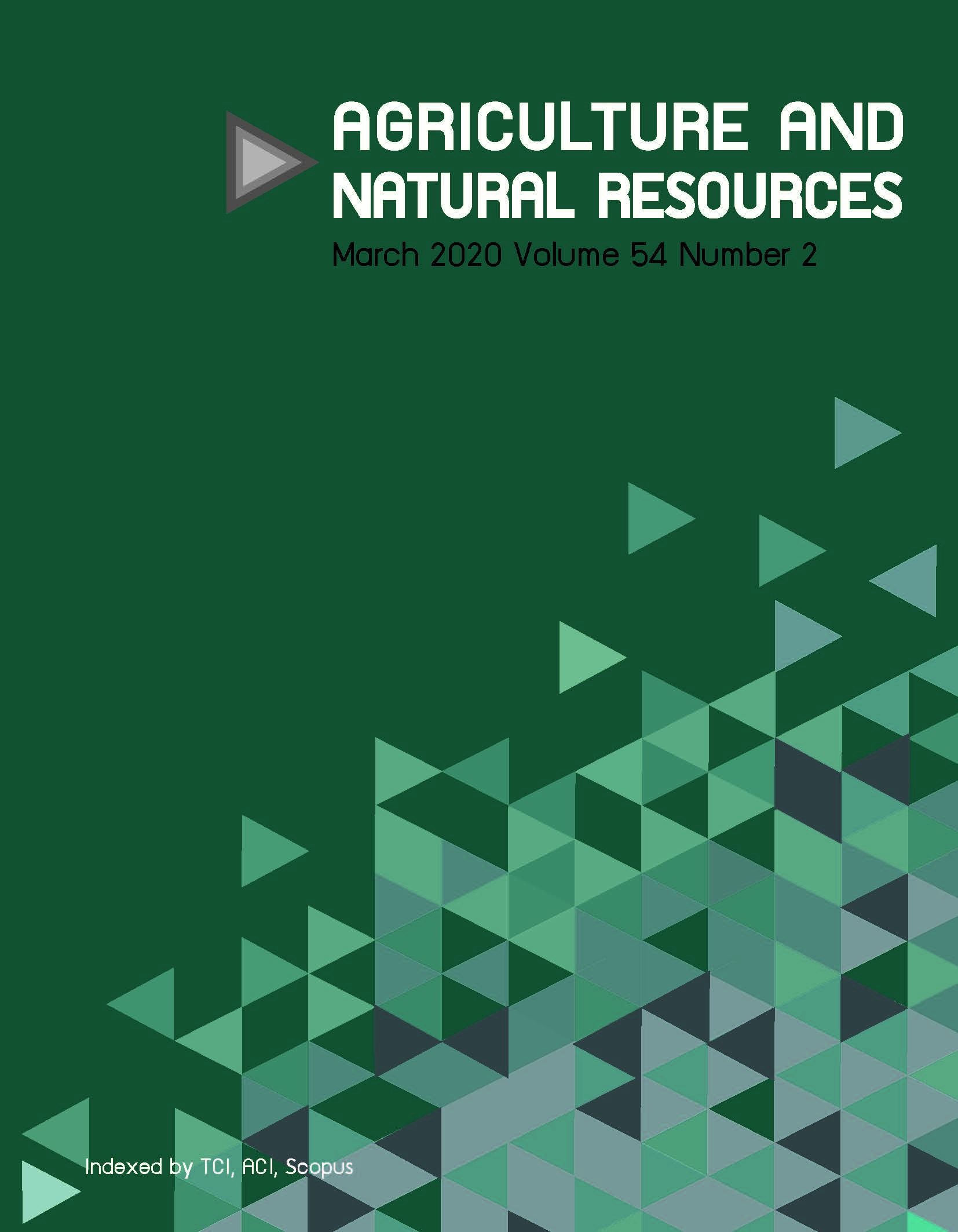Diversity of macroinvertebrates in a wetland ecosystem consisting of predominantly Typha spp. in Nonthaburi, Thailand
Keywords:
Biodiversity, Invertebrate, Typha, WetlandAbstract
Macroinvertebrates play a vital role as a decomposer community of the food web in an ecosystem dominated by Typha species. This study assessed the relationship of species richness and abundance of macroinvertebrates with the density of Typha species that predominated in an ecosystem. Pitfall traps were set along three transects, each approximately 10 m long. On each transect, four traps each were set at respective distances of 0−1 m, 3−4 m, 6−7 m and 9−10 m (4 traps × 4 distances = 16 traps). Typha species along each transect were cut every 2 wk. Samples were collected within
18 wk. In total, 21 groups of taxa of macroinvertebrates were identified. The biodiversity index of the study area was low (Shannon Wiener index = 1.355) and the evenness index was also very low (Jʹ = 0.140). The most abundant groups were the Collembola and the Acari. The Pearson correlation coefficient (r) indicated a significant positive correlation between the density of Typha species and the number of macroinvertebrate groups (r = 0.239, p = 0.013) whereas Kendall’s tau-b correlation (Tb) indicated a significant negative correlation between time and the number of macroinvertebrate groups (Tb = -0.428, p = 0.000). The study suggested that anthropogenic-induced alterations in the densities of Typha species have influenced the diversity of macroinvertebrates in this ecosystem.
Downloads
Published
How to Cite
Issue
Section
License
Copyright (c) 2020 Kasetsart University

This work is licensed under a Creative Commons Attribution-NonCommercial-NoDerivatives 4.0 International License.
online 2452-316X print 2468-1458/Copyright © 2022. This is an open access article under the CC BY-NC-ND license (http://creativecommons.org/licenses/by-nc-nd/4.0/),
production and hosting by Kasetsart University of Research and Development Institute on behalf of Kasetsart University.







